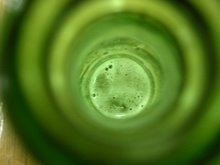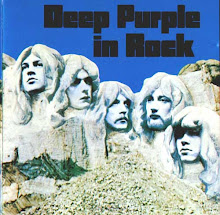I was just down in Xi'An (one of the earliest capitals of China, and home to the famous Terracotta Army) for a day.
The last time I was there, a few years ago, it was conspicuous for its absence of foreigner-friendly entertainments. It seems there's still a relatively small resident expat community there; the vast majority of foreigners in the city are tourists who stay only for a day or two.
This omission has now been 'corrected'. Yes, Xi'An now has a designated 'Bar Street'. One of those 'triumphs' of central planning. The city government decrees that there will be a 'Bar Street', and lo, a 'Bar Street' there is. I'd be curious to know exactly what mechanisms they employ to bring this about. It's such a wonderfully pointless achievement, but somehow rather impressive nonetheless (rather like The Great Wall and The Three Gorges Dam, you might say). [We have a couple of these White Elephant bar developments in Beijing, too: Yuandadu Jiuba Jie and Nuren Jie. Almost nobody ever goes there.]
I didn't clock the name of this new Xi'an 'Bar Street', but it was parallel to Nan Dajie, a block to the west, and just under a mile south of the Bell Tower Square in the centre of the city. I happened on it quite by chance, while taking a (rain-dampened) relaxing, leg-stretching, exploratory wander on the evening of my arrival.
And what a strange sight it is. Quite quaint, cobbled, more-or-less pedestrianized, but.... all the bars look the same. Exactly the same. And they all look like coffee shops (this is a common Chinese vice that I have frequently railed against in the comment-threads on my blogs). In fact, most of them call themselves coffee shops - usually with astoundingly naff names (ah, Chinglish) like 'Racy Taste Coffee'. A few of them had some live music. A few of them had customers. Chinese customers, that is. Still no foreigners in sight. No, the Street wasn't exactly doing a roaring trade - and I don't think that was just because of the weather.
The bars all seemed quite nicely, quite expensively decorated and furnished (although, in fact, these things can be stunningly inexpensive in China). And yet almost all of them had at least one or two letters, often more, that had dropped off their signs above the door and had not been replaced - hence such puzzles as 'Blu* **unt*in C**fe*' and 'C**fee M*sic *ar'. I suspect this is evidence that the proprietors splashed a little cash on setting them up but will not spend a further penny on them now that it has become apparent that they are all money-sinks.
Guess how many bars there were. Go on, guess. In a street perhaps a quarter of a mile long. How many?
27. I counted.
I confess I may have got the figure slightly wrong. It really was difficult to tell where one bar ended and another began, since they nearly all looked so similar in style and decor. Some had two entrances and some had one. Some had two signs (the name, and then something like 'Coffee Bar' or 'Live Music'), and some had one; some perhaps had none - or had a sign which had become extremely inconspicuous by virtue of having had all of its letters fall of. Some unobtrusive (easily missed), isolated doorways proved - on closer inspection - to lead to separate bars upstairs or in the basement.
No, the counting wasn't at all easy. I think the true total might actually be considerably more than 27.
Did I go in any of them? Of course not! Naff 'coffee bars' - not my scene at all.
No, I found myself a grotty noodle restaurant and drank two or three of the cheapest beers on the menu.






No comments:
Post a Comment